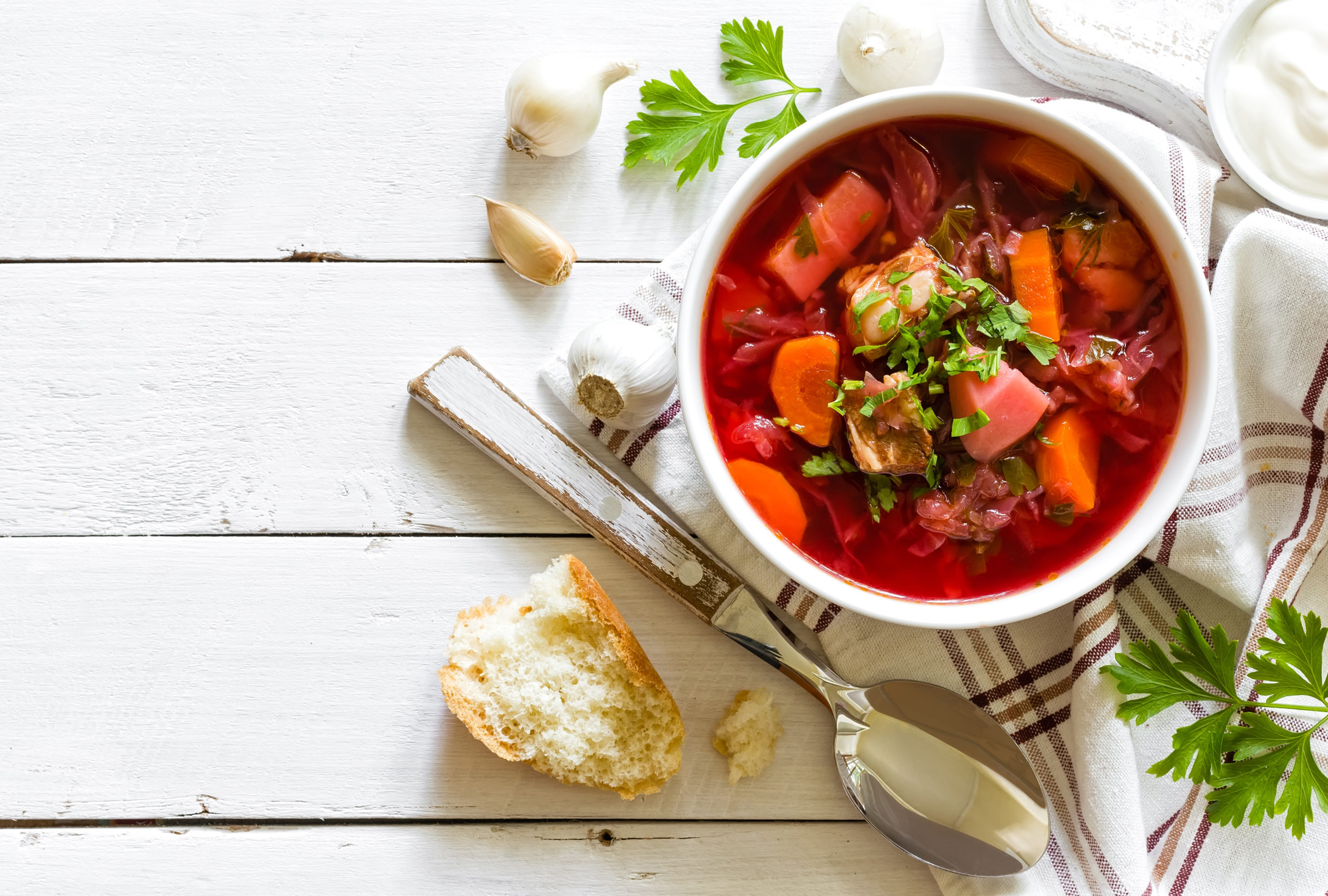Warm up during these chilly months with a nutrient-packed homemade soup.
Now that cooler temperatures have arrived, it’s the perfect time to warm up with a flavorful homemade soup. Soup is not only simple to make, but is also filling, full of nutrients and easily portioned and frozen for meals later in the week.
Follow these simple steps for making a delicious, make-your-own soup:
1. Select a broth or stock base.
Broth found at the grocery store is available in canned or boxed form, with flavor varieties including beef, chicken or vegetable. Stock, on the other hand, typically comes in boxed form in beef, chicken, seafood or vegetable flavors. Opt for low- or reduced-sodium or unsalted broths and stocks to cut back on sodium intake. Add water to reduce the stronger flavor of the broth or stock in addition to the sodium content per serving.
What’s the difference?
Broth is the liquid in which a protein (i.e., beef, chicken) or vegetables have been cooked whereas stock involves the slow cooking of an animal’s bones and connective tissue to create a savory, rich flavor.
Prefer homemade?
Interested in making your own broth? Check out these recipes for making different types of flavorful broth/stock ranging from fish stock to potato-vegetable broth.
Why broth or stock-based?
Broth- or stock-based soups, as opposed to cream-based soups, contain fewer calories and less fat. Choose or make your own broth- or stock-based soups more often.
2. Pack in the veggies.
Vegetables not only add more flavor and substance to soup, but they also offer beneficial nutrients such as fiber, potassium, folate and vitamins A and C. While common vegetables added to soup include potatoes, carrots, onions/leeks and celery, other vegetables that can be added include kale, butternut squash, cauliflower, mushrooms and many more. Both fresh and frozen vegetables are ideal for soup, but softer vegetables should only simmer for about a half hour to avoid falling apart.
3. Add a lean protein(s).
Animal-based proteins provide all of the amino acids (i.e., the building blocks of proteins) necessary to build and maintain strong muscle. Cooked animal-based proteins can be added to soup when vegetables are added. Consider using the following:
Beef:
- When selecting beef, opt for lean cuts of beef with the least amount of white, visible fat and have “loin” or “round” in the name.
- “Choice” or “Select” cuts typically contain less fat.
- If purchasing ground beef, aim for 90 percent lean or higher.
Chicken:
- Remove the skin or consider purchasing boneless, skinless chicken breasts.
- Canned chicken is a budget-friendly option and can be used in place of fresh or frozen chicken. Select canned chicken that is packed in water.
Pork: Look for reduced- or low-sodium ham.
Turkey: Leftover turkey meat is a perfect addition to warm-me-up, broth/stock-based soups.
Fish & Seafood: Delicious options include, but are not limited to, shrimp or white fish varieties like cod and halibut.
Plant-based proteins such as beans and lentils can also be added as the only source of protein or in addition to an animal-based protein. Consider adding a variety of pulses, which include colorful lentils, peas, chickpeas and beans. Look for “15 bean” soup bags, a convenient solution for adding plant-based protein, while grocery shopping. Cook dry beans prior to adding to soup, but keep in mind that extended simmering can cause the beans to lose shape.
4. Toss in a grain.
Similar to vegetables, grains, especially whole grains, offer flavor, heartiness and nutrients like fiber, B vitamins and a variety of minerals. Undercook pasta and grains prior to adding to soup, as they will soak up the broth or stock and may become mushy; however, uncooked grains can also be added. Consider using macaroni/pasta noodles, orzo, brown or wild rice, or ancient grains such as barley, spelt, farro, quinoa and more.
5. Spice it up!
Herbs and spices can be the difference between a delicious and a not-so-flavorful soup. Add herbs and spices once all ingredients have been added and toward the end of cooking once the soup has had time to simmer and flavors have melded together. Common herb and spice additions include bay leaves, garlic powder, parsley, basil and dill, while more unusual spices include cumin, ginger, mint, curry powder and turmeric. Experiment to discover your favorite flavor combinations!
Give these tasty broth/stock-based soups a try:
Hearty spinach and tortellini soup
Healthier Chicken and Dumpling Soup

